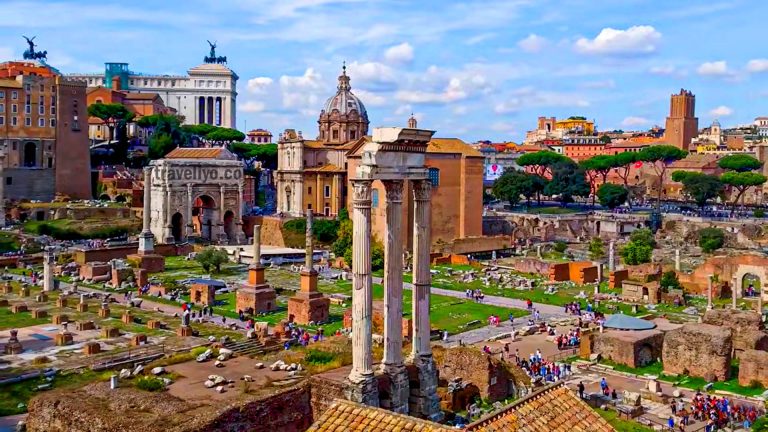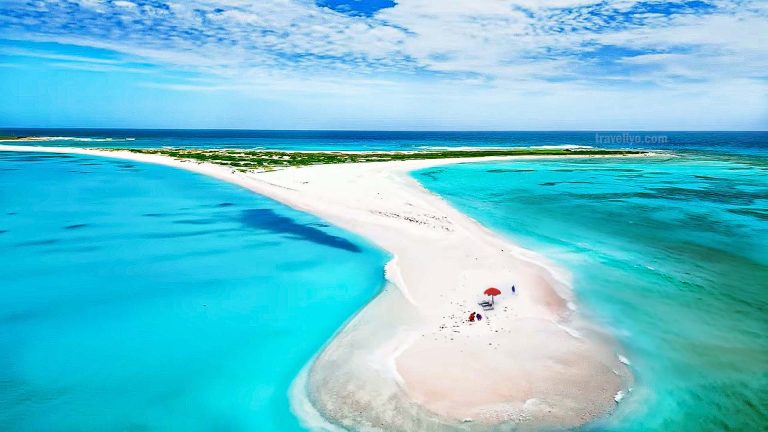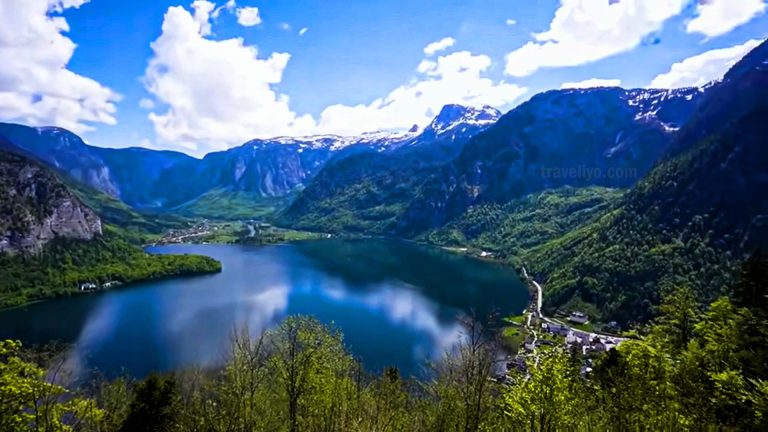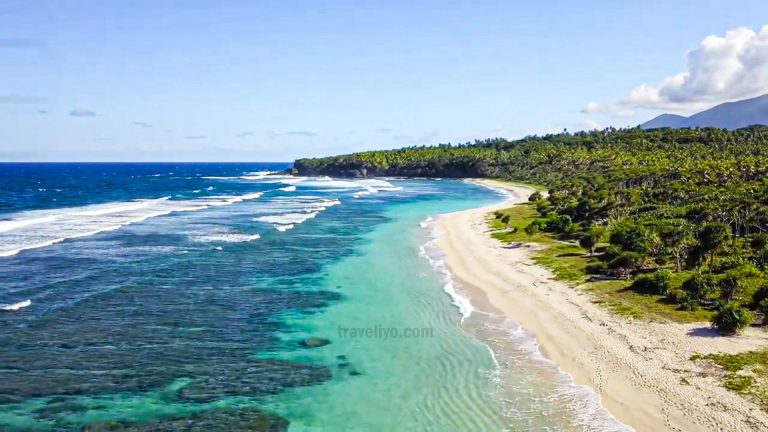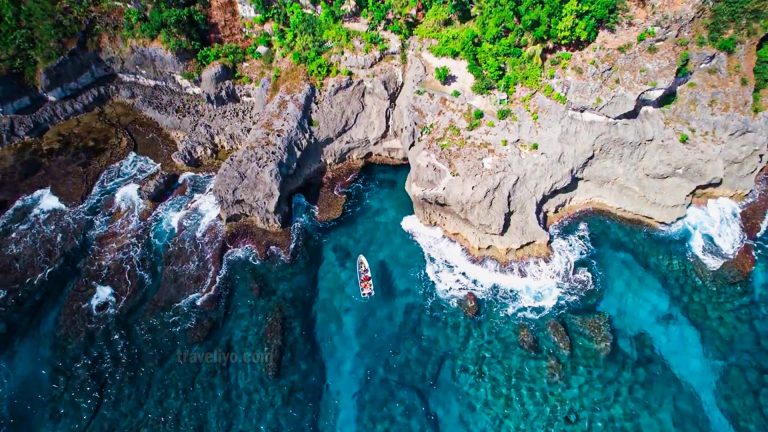Hallstatt Salt Mine: The Ultimate Guide to Austria’s Ancient Treasure (2025)

Nestled in the picturesque Austrian Alps, the Hallstatt Salt Mine is one of the oldest and most fascinating salt mines in the world. Dating back over 7,000 years, this historic site not only offers a glimpse into ancient mining practices but also provides an unforgettable experience for travelers of all ages. Hallstatt is a charming lakeside village, often referred to as a fairytale town, and the salt mine has played a pivotal role in shaping its history, culture, and economy.
Visiting the Hallstatt Salt Mine is more than just a tour; it’s a journey through time. As you descend into the subterranean tunnels, you can witness the ingenious techniques used by miners throughout the centuries. Massive wooden structures, salt extraction tools, and historical artifacts create a living museum that immerses visitors in the story of human ingenuity. The mine also features modern attractions such as slides, interactive displays, and panoramic viewing platforms that showcase the breathtaking Alpine scenery.
Tourists often marvel at the combination of historical significance and adventurous experience. Families, solo travelers, and history enthusiasts all find something to captivate their interest. The mine is especially famous for its ‘Salt Slides,’ which let visitors glide from one level to another, making the exploration enjoyable for both children and adults. In addition, educational tours explain the chemistry of salt, its importance in ancient trade, and the ways in which it influenced the development of the region.
Whether you are drawn by history, adventure, or simply the desire to explore one of Austria’s most iconic landmarks, the Hallstatt Salt Mine offers a unique and enriching experience. Planning your visit carefully can enhance your journey, ensuring you make the most of this extraordinary site. With guided tours, comfortable visitor facilities, and detailed historical insights, the mine is designed to be accessible, informative, and unforgettable for every traveler. Discover more about Hallstatt 👉
1. ⛏️ History of Hallstatt Salt Mine
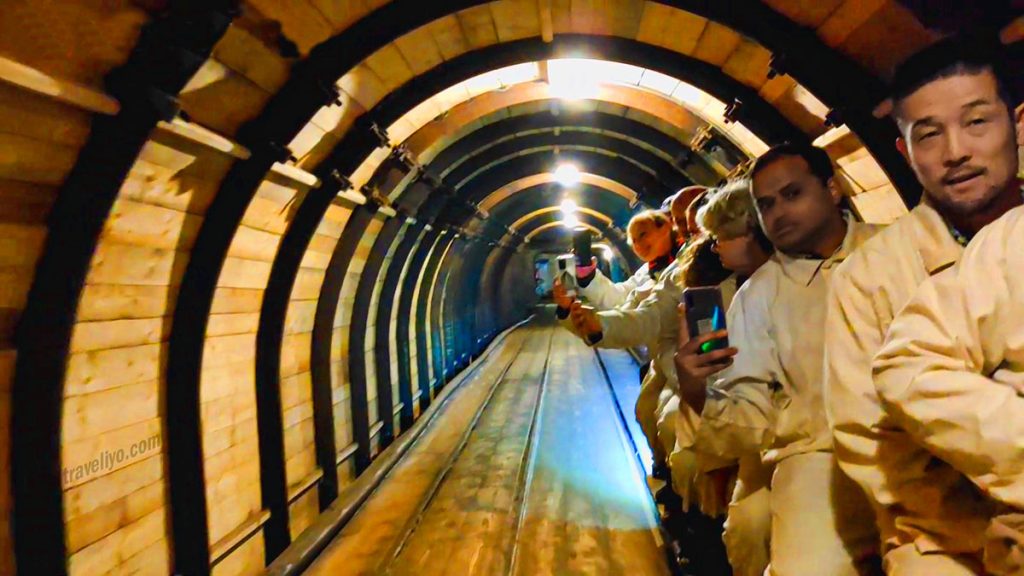
The Hallstatt Salt Mine has a history that stretches back to prehistoric times, making it one of the oldest salt mines in Europe. Archaeological evidence indicates that salt extraction in the region began around 5000 BCE, with early inhabitants using primitive tools to mine the valuable mineral. Salt was considered a precious commodity in ancient societies, often referred to as “white gold,” because it was essential for food preservation and trade.
Over the centuries, mining techniques evolved from simple hand tools to more sophisticated methods. During the Celtic period, Hallstatt became a prominent center for salt trade, and the wealth generated from mining contributed to the development of a highly advanced society. Excavations in the region have revealed ancient wooden staircases, mining equipment, and even burial sites, providing a remarkable window into the lives of early miners.

In the middle Ages, the salt mine continued to thrive under the rule of the Habsburg monarchy. Mining operations expanded deep into the mountains, with tunnels extending for kilometers. The economic significance of salt helped shape Hallstatt into a prosperous town, attracting traders, artisans, and settlers. Today, the mine preserves many historical structures, allowing visitors to witness the engineering marvels of the past.
The historical importance of the Hallstatt Salt Mine extends beyond economics. It played a vital role in the cultural and social development of the region, influencing settlement patterns, trade networks, and even artistic traditions. For modern visitors, the mine provides a tangible connection to human history, demonstrating how a natural resource can shape civilizations over millennia.
2. 📍 Where is Hallstatt Salt Mine?
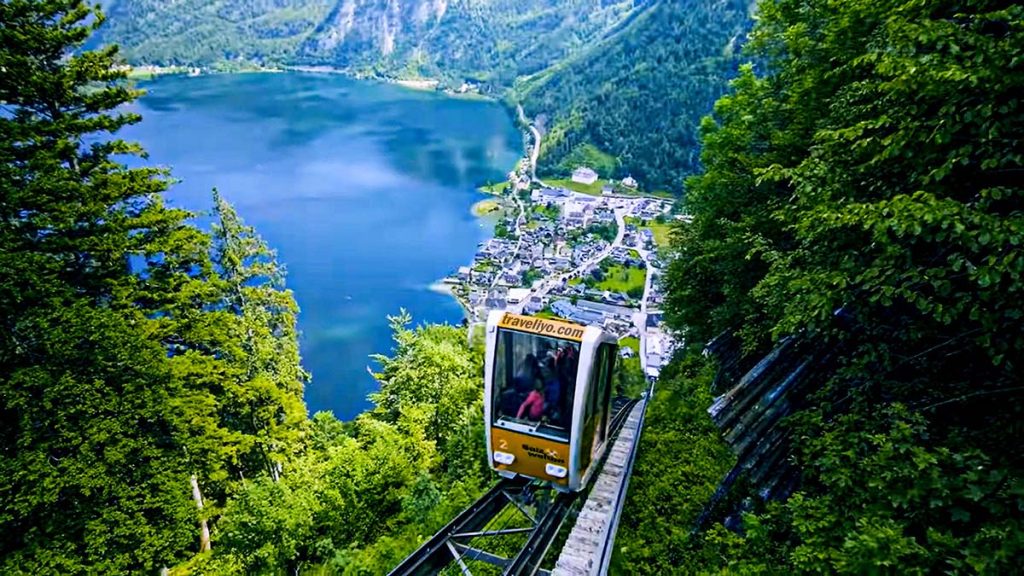
Located high above the UNESCO World Heritage village of Hallstatt in Upper Austria, the Hallstatt Salt Mines (Salzwelten Hallstatt) sit at about 838 meters above sea level. The mines are part of the Dachstein Salzkammergut region, which is famous for breathtaking mountain views, crystal-clear lakes, and centuries-old traditions.
Region: Salzkammergut, Austria
Elevation: 838 m (2,749 ft)
Nearby landmarks: Lake Hallstatt, Dachstein mountains
3. 🚆 How to Get There

Reaching the Hallstatt salt mine is part of the adventure. Travelers have multiple options depending on where they start their journey.
🚗 By Car
From Salzburg: ~1.5 hours drive (70 km)
From Vienna: ~3.5 hours drive (300 km)
Parking available near Hallstatt village (P1, P2, and P3 lots).
🚆 By Train & Ferry
Train from Salzburg or Vienna → Arrives at Hallstatt train station (across the lake).
Ferry service connects the station to Hallstatt village.
From the village, a funicular or walking path leads up to the mine entrance.
🚌 By Bus
Regional buses from Salzburg and Bad Ischl provide direct access.
🚡 By Funicular
From the village, a funicular railway takes you up Salzberg Mountain directly to the mine entrance.
4. 🏨 Where to Stay
Hallstatt is a small town but offers cozy stays ranging from boutique hotels to lakeside guesthouses.

Seehotel Grüner Baum – Famous lakeside luxury option.
Heritage Hotel Hallstatt – UNESCO-listed historic charm.
Gasthof Zauner – Traditional Austrian guesthouse.
Budget-friendly stays – Guesthouses in Obertraun (a nearby village).
💡 Internal Linking Tip: For a complete guide on where to stay in Hallstatt, check our full Hallstatt Austria guide on Traveliyo.com.
5. 🎢 Things to Do in Hallstatt Salt Mine
A visit to Salzwelten Hallstatt is more than just a mine tour — it’s an experience blending history, adventure, and breathtaking scenery.
Guided Salt Mine Tour

Explore 7,000 years of history.
Multimedia presentations and archaeological exhibits.
Underground salt lake with magical lighting.
Giant Wooden Miners’ Slide

A thrilling 64-meter-long slide used by ancient miners.

A highlight for families and adventure seekers.
👀 Skywalk Welterbeblick

A panoramic platform above the mine offering jaw-dropping views of Hallstatt and Lake Hallstatt.
🏛️ Hallstatt Museum

Showcasing archaeological finds from the mine, including tools, clothing, and burial items.
🌊 Lake Hallstatt Activities

Boat rides, swimming, and lakeside walks add relaxation after your underground adventure. Read more>>
❄️ Dachstein Ice Caves

Located nearby, these caves are a spectacular natural wonder worth combining with your salt mine trip.
6. 🍽️ Food & Local Cuisine
After exploring the salt mine Austria Hallstatt, enjoy traditional Austrian dishes in the village.

Freshwater fish from Lake Hallstatt (especially trout and char).
Austrian pastries such as Apfelstrudel and Kaiserschmarrn.
Local specialties like dumplings, schnitzel, and hearty soups.
Traditional Dishes: Wiener Schnitzel, Kasnocken (cheese dumplings), Austrian strudels.
Restaurants like Gasthof Zauner or lakeside cafes offer authentic flavors in a charming atmosphere. Recommended Restaurants: Gasthof Zauner, Restaurant Rudolfsturm (near the salt mine funicular).
7. 🌤️ Best Time to Visit

Spring (April–June): Pleasant weather, fewer tourists.
Summer (July–August): Peak season; ideal for families and lake activities.
Autumn (September–October): Beautiful fall colors, fewer crowds.
Winter (November–March): Magical snowy landscapes, Christmas charm, but limited mine tours.
👉 Recommendation: The best months for visiting Hallstatt salt mine are May, June, September, and October.
8. 🧳 Practical Travel Tips
Best Time to Visit: Spring and summer offer pleasant weather and extended daylight, while winter provides a magical snowy experience.
Tickets: Purchase online to avoid queues. Group tours often require advance booking.
Clothing: Wear comfortable shoes and warm clothing, as the mine maintains a cool temperature year-round. (mine temperature: ~8°C/46°F year-round).
Accessibility: Some areas may be challenging for people with mobility issues; check in advance for accessible paths.
Photography: Allowed in most areas; avoid flash in sensitive zones.
Guided Tours: Highly recommended to fully understand the history and techniques.
Nearby Attractions: Hallstatt village, Lake Hallstatt, Dachstein Ice Caves, Skywalk.
Time Needed: Allocate 2–3 hours for a full experience including the village and mine.
9. 💰 Budgeting

Visiting Hallstatt salt mine can fit both luxury and budget travelers.
Tickets: Adults €40 (funicular + salt mine tour), children discounts available.
Accommodation: €60–€250 per night.
Food: €15–€40 per meal.
Transportation: Train + ferry combo tickets around €20–€30.
💡 Tip: Staying in nearby Obertraun saves money compared to Hallstatt’s premium prices.
📖 10. Frequently Asked Questions (FAQ)
1.❓ How old is the Hallstatt Salt Mine?
The Hallstatt Salt Mine is over 7,000 years old, making it one of the oldest salt mines in Europe. Archaeological evidence shows mining activity dating back to prehistoric times.
2.❓ Is the mine suitable for children?
Yes, the mine is family-friendly. The slides and interactive exhibits make it exciting for children, though supervision is recommended.
3.❓ How do I get to the Hallstatt Salt Mine?
Most visitors reach Hallstatt by train or car from Salzburg or Vienna. From the village, shuttle services or walking paths lead to the mine entrance.
4.❓ Can I take photographs inside the mine?
Photography is allowed in most areas, but flash may be restricted to protect delicate structures.
5.❓ What is the best time of year to visit?
Spring and summer offer mild weather, while winter provides a snowy, festive atmosphere. Peak tourist months may require advance booking.
6.❓ Are guided tours necessary?
Guided tours enhance the experience by explaining history, mining techniques, and interesting stories. Self-guided tours are possible but less informative.
7❓. How long does a visit take?
A typical visit lasts 1–2 hours for the mine itself. Including Hallstatt village exploration, plan for 3–4 hours.
8.❓ Is the mine accessible for elderly or disabled visitors?
Certain areas may be challenging. Contact the mine in advance to check accessibility options.
9.❓ Are there any seasonal events?
Yes, special tours are offered during Christmas and summer months, featuring themed decorations and activities.
10.❓ What should I wear?
Comfortable shoes and warm clothing are recommended due to cool underground temperatures.
11.❓ Are there food and rest areas?
Yes, the visitor center has restrooms, snack options, and seating areas.
12.❓ Can I buy tickets online?
Yes, online booking is recommended to avoid queues, especially during peak season.
13.❓ Are there souvenir shops?
Yes, the visitor center offers salt-themed souvenirs, local crafts, and educational materials.
14.❓ Is the mine safe?
Absolutely. Safety measures are in place, and guided tours ensure visitors remain on secure paths.
15.❓ Are pets allowed?
Pets are generally not allowed inside the mine tunnels, except for service animals.
11. 🧭 Final Thoughts + Traveliyo Recommendation

The hallstatt salt mine is more than a tourist attraction—it’s a journey through human history and Alpine beauty. From prehistoric tunnels to breathtaking mountain views, this destination delivers something unforgettable for every traveler.
👉 At Traveliyo, we recommend combining your salt mine adventure with a full Hallstatt village experience. Read our Hallstatt Complete Travel Guide for insider tips, hidden gems, and practical planning advice.
For a complete travel experience, read our full Hallstatt Austria Travel Guide>>
For more historical background, You can read the detailed article on Wikipedia
Did this guide help you? Have you also visited Hallstatt? Share your experience in the comments below – it will be very valuable for other travelers.


